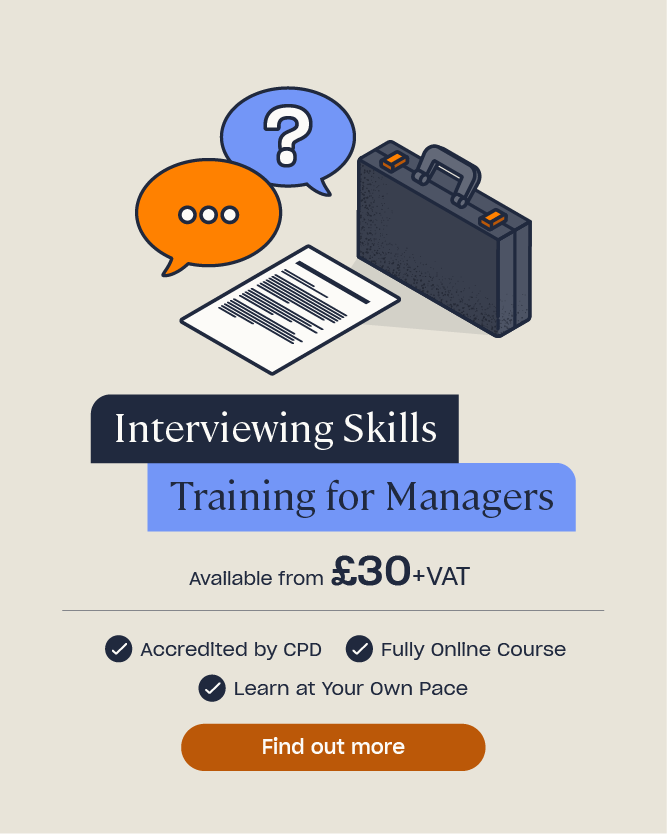Hire for Attitude, Train for Skill: Recruitment Strategies
The phrase ‘hire for attitude, train for skill’ is an increasingly popular concept amongst recruiters, rooted in the fact that it’s important to employ people who are the right fit for your business. It’s been found that 46% of new hires fail in their jobs within the first 18 months. Of these, 89% was due to reasons associated with the new hires’ attitudes. As such, attitude should be a large consideration during the hiring process.
The theory behind this approach is straightforward: Whilst hard skills can easily be taught, soft skills are usually more innate.
In this article, we will explain in more depth what it means to ‘hire for attitude, train for skill’, delve into the importance of soft skills in the workplace, and offer our tips on recruitment strategies for how to hire for attitude.
Hire for Attitude, Train for Skill Meaning
The phrase ‘hire for attitude, train for skill’ essentially suggests that finding candidates with the right soft skills, such as a good mindset and approach to work, and that fit into your company culture, is more important than finding talent with specific technical skills. It’s a form of values-based recruitment strategy where personal attributes are prioritised over a performance-based skill set.
Whilst this doesn’t mean you should ignore hard skills altogether, the concept is that if you hire candidates with the correct attitude, they will be able to learn the necessary skills for the role.
Some of the most common reasons for new hires to leave a company are a lack of coachability, low levels of emotional intelligence, motivation, and bad temperament. Notably, these are all attitude-based issues. Thus, hiring for attitude can help to prevent these common problems from the very beginning. Ultimately, it’s far easier to teach a skill than it is to change a person.
By hiring people who comfortably align with your company brand, it’s possible to reinforce your individual company culture with each new hire who is a great fit, resulting in a workforce that is happier, more engaged and ultimately more profitable.

Importance of Soft Skills in the Workplace
Soft skills are character traits and interpersonal skills that characterise relationships with other people and complement hard skills in the workplace. As such, when we speak about hiring for attitude, we essentially mean prioritising candidates who have desirable soft skills.
Soft skills are critical for success in most careers, as they’re the driving force of an employee’s, and therefore a business’, growth and adaptability. Although not quantifiable, soft skills are an essential resource that can vastly increase efficiency, team-building, and innovation in the workplace.
92% of talent professionals believe that soft skills are just as important, if not more important, than hard skills, however only 37% of employers feel that their entry-level employees have the necessary soft skills. Prioritising soft skills in the hiring process can help to repair this disconnect.
Examples of some of the most essential soft skills for the workplace include:
- Communication.
- Adaptability and Problem Solving.
- Responsibility and Leadership.
- Teamwork.
- Critical Thinking.
- Positive Attitude.
- Creativity.
To read in more depth about what soft skills are and to find further examples, read our full article on Soft Skills in the Workplace.
In contrast, hard skills are concrete quantifiable abilities acquired through education or training, for example coding, finance, software development, or data analysis. Whilst the ‘hire for attitude’ mantra focuses on prioritising soft skills, you can read more about hard skills in our Hard Skills in the Workplace article.
So why are soft skills arguably more important? Well, some experts have likened hard skills to being like a race car, whereas soft skills are the driver. Whilst it’s important to have knowledge and abilities relevant to a role, it’s personal qualities, soft skills, such as resilience and drive that will determine how far somebody goes and how fast they get there.
Additionally, soft skills are becoming increasingly important in the modern world as workplaces change over time. As processes become more automated, with machines able to replicate certain hard skills and optimise manual processes, the role of soft skills becomes ever more vital. After all, with many organisations using the same new technology, it’s a team’s judgement, creativity, and innovation that will help to maintain an edge over competition and adapt to new ways of working. Furthermore, with increasingly flexible working arrangements (e.g. working remotely, hybrid, or at different times) and more diverse staffing, strong collaborative and communication skills are more crucial than ever to ensure a team’s success.
In summary, hard skills are no longer enough to thrive in the modern world of work.

How to Hire for Attitude: Recruitment Strategies
Whilst the method of recruiting for attitude seems simple in theory, it’s understandable that your current hiring process may not currently be set up to facilitate this. After all, traditional methods of evaluating candidates, such as CV’s/resumes, are often focused more on hard skills and experience than personality traits.
Fortunately, there are a few easy steps you can take to cater your recruitment process to finding out more about a candidate’s characteristics and soft skills in addition to their hard skill set.
Identify the Attributes of Your Top Performers and Prioritise These Traits in Candidates
Think about who your top performing employees are in the company, and ask yourself why they have been so successful. What soft skills do they have that has led them to being a high achiever? Whilst this will differ from role to role, you should be able to identify what traits lead to success in the job you are hiring for.
Once you know the kind of attitude and attributes you’re looking for, you can create interview questions that aim to reveal whether a candidate displays these soft skills, and follow up with those that do.
Encourage Candidates to Tell Stories About Themselve
An open question will always lead to you learning more about someone than a closed one. This is also true in interviews. The more you can get a candidate to speak candidly about themself, the better you will understand their attitude and whether this fits in with your company culture and job spec.
To encourage storytelling within an interview, try to incorporate plenty of situational or behavioural questions, such as asking about a past event, success, failure, or problem they’ve overcome. When candidates tell a story referring to real life situations, this will tell you far more about them than asking them to list their character traits directly. This is because it’s much harder to lie or to be superficial when referring to real-life examples.
You can learn more about storytelling in interviews in our article on How to Use the STAR Method.
Advertise Your Culture to Attract the Right People
Often people apply to roles that they believe will suit them or that look desirable in terms of workplace culture or benefits. Thus, the more you advertise who you are as a business, e.g. your morals, mission, and management, and what it’s like to be an employee at your company, the more you will attract people who identify with what you’re offering. This reduces the likelihood of hiring someone who isn’t a right fit, as these people are less likely to apply in the first place.
Be Proactive
Hiring people with the correct attitude to fit well into your company culture isn’t always about waiting for the right candidate to show up. If you meet someone who has great qualities that you believe would benefit your team, why not approach them? Understandably, they might not always be in a position to start a new job, but equally they may just say yes!
Observe Your Candidate Outside of the Interview
An interview is essentially a performance where a candidate is understandably trying to come across in the best way possible, but sometimes this can make it difficult to glean their true personality. It can be helpful to consider the interview as starting the moment a potential hire walks through the door, not just in your formal conversation with them. For example, how do they treat other members of staff on the way to your office, and do they strike up conversation with other applicants? These moments when a candidate isn’t aware they’re being observed may differ to how they present themselves in an interview, and can be the most telling as to whether they’ll fit your company culture.

How to Train for Skill
Once you’ve hired someone with a great attitude and soft skills that fit well with your company culture, how do you then go about ensuring their hard skills are equally up to scratch? As mentioned, it’s far easier to teach someone a skill than it is to change who they are innately.
As a manager or employer, it’s recommended that you create a Training Needs Analysis to identify any gaps in your employee’s skills or knowledge, and establish how these gaps can be filled.
If you’ve hired someone with soft skills including a strong work ethic and tenacity, they should easily and willingly be able to pick up more technical proficiencies. But what are the most effective methods of ensuring a new hire gains the correct hard skills needed to do their role?
Here are a couple of suggestions to build into your onboarding process:
Encourage the Use of a Personal Development Plan
To avoid a lack of progress, it’s important that a new hire knows exactly what skills they need to develop, how they will go about doing this, and when they should have acquired these skills by. Having a Personal Development Plan (PDP) is crucial to accomplishing this. A PDP is a method of focusing goals into achievable steps, which helps to keep track of personal development.
Learn more about the benefits of PDP’s, and download our free editable template, in our article, A Personal Development Plan (PDP) Guide & Template.
Using Online Training
Online training is a highly flexible and accessible form of learning a new skill or developing existing ones. One major advantage to this form of learning is that it can be done at any time or place, meaning a new hire can learn the hard skills needed to excel in their role outside of working hours or in small sections rather than one long training day, and can learn from the comfort of their own home if they choose.
Looking for Online Training?
We have over 180 comprehensive courses that can help to upskill your team. Discover our range of Business Essential courses to teach fundamental skills for any company, or browse one of our industry focused course categories such as Health and Safety, Education, or Food Hygiene.
Shadowing Other Team Members
Chances are, you already have established employees within your company who have the hard skills that a newer hire is looking to acquire. If this is the case, use your internal talent to help pass on their skills and knowledge. This is an affordable form of training and will benefit the trainer, who will develop their communication and leadership skills, as well as the individual doing the shadowing.
Although these examples give a taste of the best ways to ensure all your employees are gaining and developing the hard skills needed to succeed in their role, you can find more expert ideas in our full article on 6 Ways to Upskill Your Employees.
Hiring for attitude and training for skill is a recruitment mantra that aims to remove some of the most common issues with new hire retention rates and ensure you establish and maintain a strong workplace culture with employees that are a great fit for your business. Hiring for attitude works on the basis that soft skills are essential for success in business, but are hard to develop, whereas hard skills can easily be taught to someone with the correct attitude.
Further Resources:
- Soft Skills in the Workplace
- The Consequences of a Lack of Training in the Workplace
- 6 Ways to Upskill Your Employees
- A Personal Development Plan (PDP) Guide & Template
- Hard Skills in the Workplace











